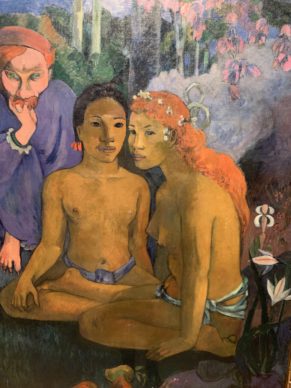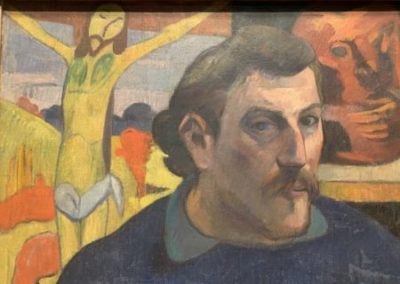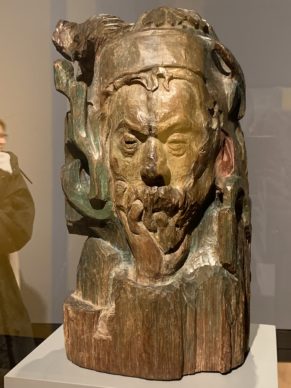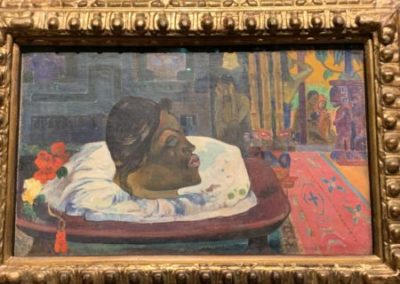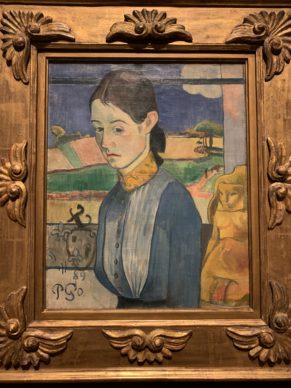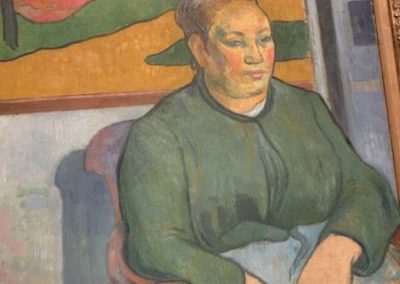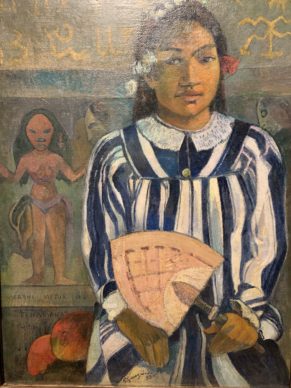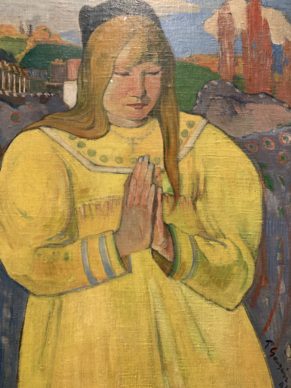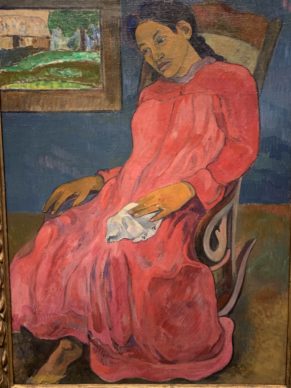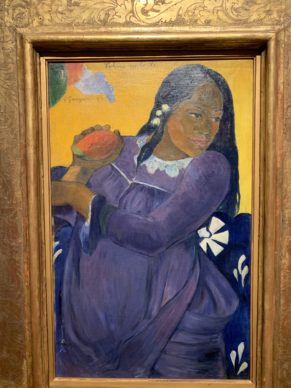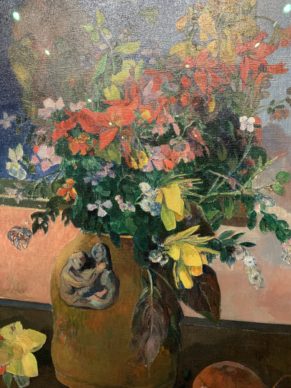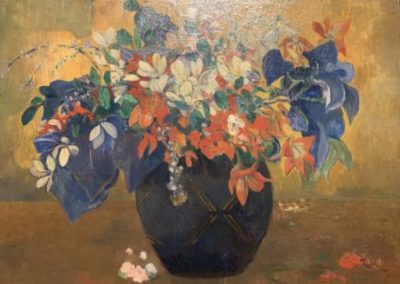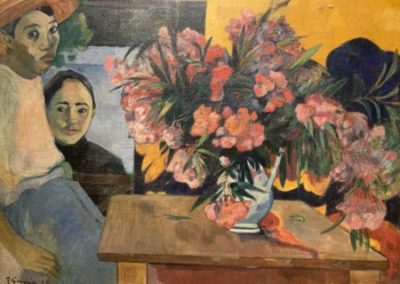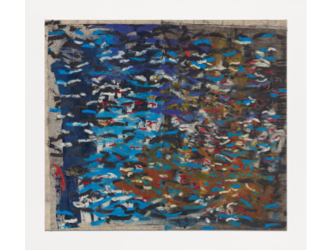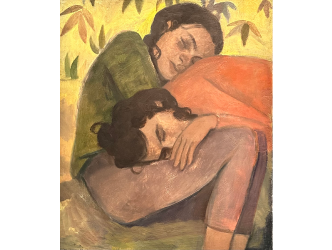Their defense
A good justice system works in such a way that when an individual is on trial we ask them to explain themselves or better yet to organize their defense.
A moral history of art
At the stake of a new and more moral history of art, no defense has been arranged for the accused.
Paul Gauguin and young women
Today it is Paul Gauguin who is at the center of a storm for having liked young Tahitians and other women from the Marquesas islands. But he is dead and buried and thus unable to defend himself. Is this fair? No.
Edgar Degas anti-Semite
Using that logic we ought to also banish from our galleries the likes of Edgar Degas, who is currently the star of the Musée d’Orsay. Particularly since the exhibition “Degas at the Opera” is due to travel to Washington. Because the painter was a notorious anti-Semite. Should he be forgiven? No. Should his work continue to be admired: yes.
Picasso, Giacometti and bretels
And all the artists who were regular visitors to brothels, all the Picassos and Giacomettis who even conceived major works there, should we continue to admire them even though they paid poor girls in exchange for sex?
Gauguin canceled?
All that to say that while reading an article in the New York Times entitled “Is it time Gauguin got canceled?” from 18 November 2019 my hackles were raised. We must continue to look at Gauguin’s work because he is a great artist.
Verified facts
Gauguin was clearly fascinated by the women from the islands where he lived but also by the local culture in general. Is it desirable to point out absolutely verified facts? Yes. But his interest was not just physical. And this was a remarkable attitude for the time, in a racist and colonialist society. Do we know whether older local men married young women? (Gauguin died at the age of 54). Again, nothing is said on the subject.
No duty of realism
Furthermore, Gauguin had no duty towards realism. He didn’t paint reality so much as an imaginary place, a paradise lost, a land as it was in his mind before the arrival of the white colonizers.
No political correctness
By all means say that he liked young women, but please allow us to enjoy his paintings, and those of this entire artistic cohort, in peace, as they never wanted to be politically correct. But let’s finally return to the subject at hand:
Not a portraitist
We can ascribe certain virtues to Gauguin (1849-1903) including the fact that he was an excellent painter, but he has never been, strictly speaking, a portraitist.
National Gallery
Nonetheless, the National Gallery in London is dedicating a whole show with 56 artworks to the subject of his portraits. And against all expectations, this non-subject gives rise to an excellent exhibition.
Sublime Gauguin
Firstly because it’s always a delight to see good works by Gauguin. And next because this exhibition invites us to look at his work differently. It opens with a room featuring eight self-portraits.
No psychology
The artist makes no attempt to uncover the secrets of the faces that he depicts.
The head like a motif
There’s no psychology expressed through them. For him, the heads he paints – even when it’s his own – serve as motifs, as though they were a tree or a flower.
Paul Cézanne
In this respect he resembles Cézanne, whose catalogue states that he was a fervent admirer. This is clearly demonstrated with a remarkable work exhibited later on, the “Portrait de Madame Roulin” from 1888. This large woman is like a wax statue with half her hands cut off in his depiction.
First the colours
Because what we observe first of all in this painting are the colours outlined in black. The green of her pullover with undulating forms. The light blue of the wall. The dark blue of the armchair depicted with its shadow and behind it a slice of the painting on the wall in yellow, green and orange.
Vincent Van Gogh
At the same time, in the same place, in Arles, his friend Vincent Van Gogh also painted Madame Roulin. In the latter’s depiction she clearly has a sullen air that we don’t find in the placid face painted by Gauguin.
Christopher Riopelle
“I believe that it is the difference of desire in the depiction that separated the two friends,” explains the curator of the exhibition, Christopher Riopelle.
Watch the video to find out more
Hybrid composition
Gauguin also made many hybrid compositions halfway between portrait and still life. In “Les Fleurs de France”, made in Tahiti in 1891, three quarters of the canvas are taken up by a bouquet while on the left-hand side a young man looks out at the viewer. Behind him there’s a woman. Due to a frame around her, we cannot say whether she’s real or part of a painting placed there. Gauguin plays with the viewer.
Flowers as portraits
The end of the exhibition is dedicated to a theory that is a little daring: the bouquets of flowers acted as surrogates for portraits. It’s clear, however, that using the association of ideas the painter featured sunflowers in 1901 to evoke Van Gogh, who was dead by that point. The flowers are surrounded by images evoking two of his fellow painters whom he was attached to: Puvis de Chavannes and Degas. Which leads us to believe that certain paintings by Gauguin function as rebuses. This is perhaps the real subject of the exhibition.
Watch the video to find out more:
Gauguin Portraits. Until 26 January.
London. www.nationalgallery.org.uk
Donating=Supporting

Support independent news on art.
Your contribution : Make a monthly commitment to support JB Reports or a one off contribution as and when you feel like it. Choose the option that suits you best.
Need to cancel a recurring donation? Please go here.
The donation is considered to be a subscription for a fee set by the donor and for a duration also set by the donor.

